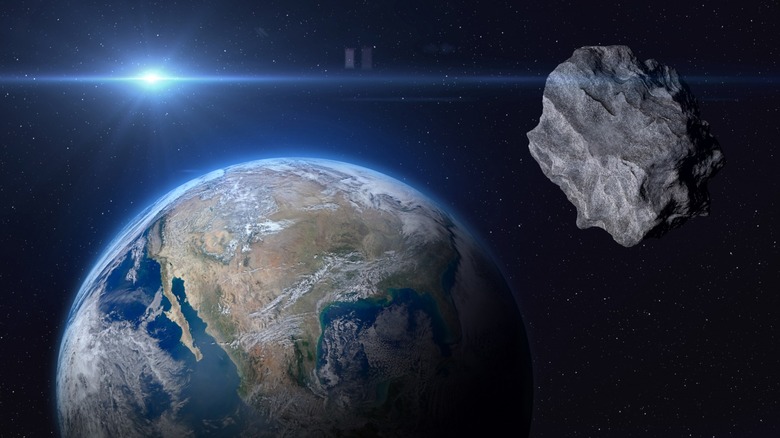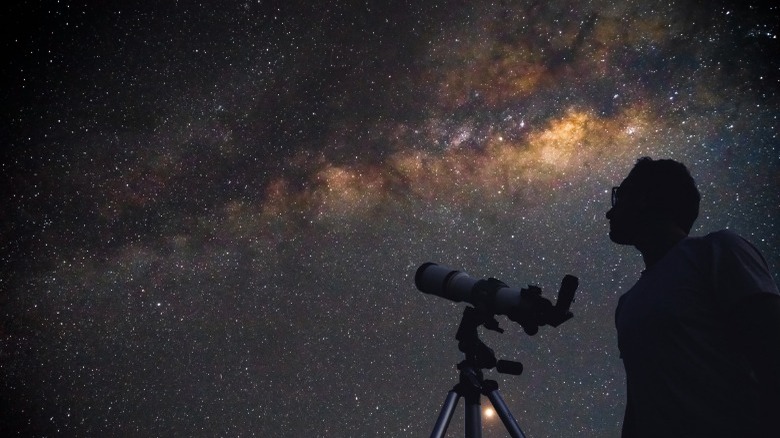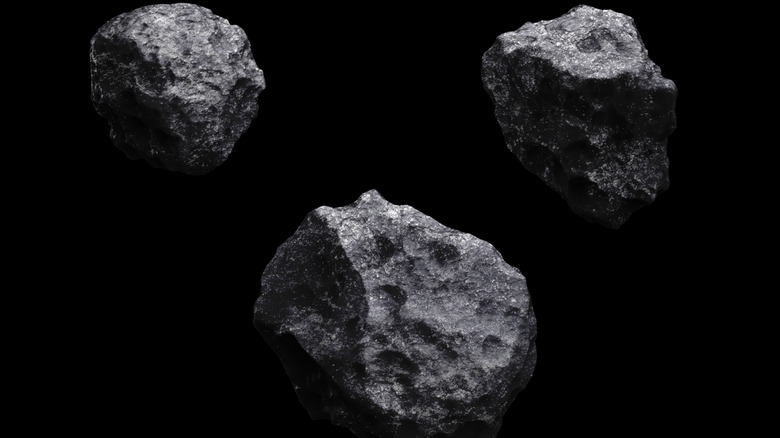Scientists Discovered A Strange 'Mini Moon' Asteroid Orbiting Earth
Has Earth ever had more than one moon? Well, it depends how you define it, but Earth definitely has had other orbiting objects over the years. In fact, three have been confirmed in the 21st century alone. One of those was discovered in December 2022. It's an asteroid known as 2022 YG, per CNET.
Though it was first seen on December 15, the official discovery is recorded on December 16 at the MARGO Observatory in Nauchnij, Crimea (via Minor Planet Center). It was spotted by amateur astronomer Gennadiy Borisov, who also previously discovered the first known interstellar comet, according to CNET. 2022 YG was last observed on December 23 at the Steward Observatory on Mount Lemmon, Arizona (via Minor Planet Center). The European Space Agency estimates its next pass near Earth will be around December 22, 2023.
Despite having been spotted only recently, 2022 YG has been orbiting Earth since about 1961, according to astronomers' estimates. They guess it may stay in orbit until around 2181, but CNET says astronomers will be doing further research to refine that estimate.
The numbers on 2022 YG
Simulations of 2022 YG's orbital path show that it's unusually shaped: like an elongated oval, stretching out far beyond Earth in two directions but closer to us on its other two sides (via CNET). This type of orbit is called Apollo, named for asteroid 1862 Apollo. Per NASA's Jet Propulsion Lab, this term applies to asteroids close to Earth but with a semi-major axis longer than Earth's, meaning that its orbital path is longer than ours in at least one direction.
Astronomers believe 2022 YG takes about 366 days to orbit Earth once, similar to the length of Earth's orbit of the Sun, per the European Space Agency. Of course, it isn't perfectly circular; CNET says it's estimated to have a diameter of about 52 feet in one direction and 98 feet in the other.
The Minor Planet Center records 2022 YG's arc length as eight days. This is the length of time over which a celestial object has been consistently observed. The arc length helps astronomers guess the object's orbital path (via European Space Agency). 2022 YG has been observed from nine different places on Earth so far, per the Minor Planet Center.
Earth's mini-moons
During the 19th and 20th centuries, various people made claims of having discovered "mini-moons" — other objects orbiting Earth. None of these were accurate. According to Discover Magazine, clouds of dust or debris near the moon can sometimes be mistaken for mini-moons, but they aren't really solid enough to qualify. However, scientists believe there may be more mini-moons we don't know about. In 2014 and 2016, two small fireball meteors smashed into Earth, and estimates of their orbital paths suggested they'd been orbiting Earth.
Most mini-moons don't stay orbiting Earth for very long. The two confirmed mini-moon asteroids discovered in the 21st century only stayed with us briefly, per CNET. Discover explains this is because the Earth's gravity only has a weak hold on them. 2022 YG's projected 220-year orbit of Earth is unusual.
The first confirmed mini-moon was discovered in 2006. The moon's gravitational pull knocked it out of Earth's orbit by June 2007, after which it orbited the sun. The second confirmed mini-moon was discovered in 2020. Called 2020 CD3, it was hard to spot because it was much smaller than 2022 YG, only about three feet wide. It probably orbited Earth from 2017 to 2020 (via Space.com). It was around 300,000 miles away from Earth, slightly closer than the moon, per Discover Magazine. Astronomers hope our orbiting asteroids could provide a new opportunity in space exploration, allowing for short missions from Earth.


